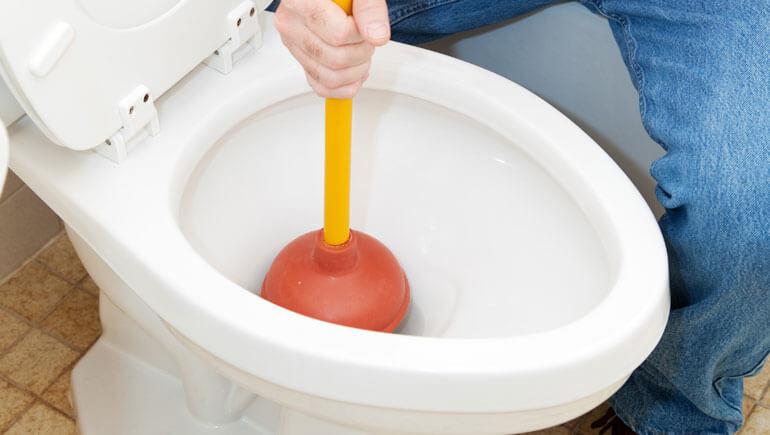How do you feel when it comes to How to Use a Plunger to Unclog a Toilet or Drain?

Introduction
Appropriate maintenance of family drains is vital for avoiding obstructions and ensuring smooth water circulation. Among the trick tools in every house owner's toolkit is the bettor, alongside numerous drain cleaners created to deal with persistent obstructions effectively. This short article explores exactly how to utilize plungers and drain cleansers effectively to keep your drains flowing easily.
Section 1: Comprehending Plungers
Kinds of Plungers
There are numerous kinds of plungers available, each designed for different sorts of drains pipes and obstructs. One of the most common kinds include mug bettors, flange bettors, and accordion bettors.
Just How Plungers Job
Plungers work on the concept of producing pressure and suction to dislodge clogs. When correctly used over a drain, they develop a vacuum that can take out debris or break up obstructions.
Choosing the Right Bettor
Selecting the right bettor depends on the kind of drainpipe and the nature of the clog. Mug plungers are ideal for sinks and bathtubs, while flange plungers are better fit for commodes because of their style.
Usual Mistakes with Plungers
Preventing these errors makes sure reliable plunging: improper seal around the drainpipe, insufficient pressure, and unclear bordering debris.
Section 2: Using Plungers Efficiently
Preparation
Prior to diving, ensure the bettor covers the drainpipe totally and creates a limited seal. Clear any type of visible particles around the drain opening.
Technique
Start with gentle diving movements to construct suction. Rise pressure slowly, using a constant rhythm. Repeat as needed up until the drain removes.
Fixing Tips
If plunging does not function, try adjusting the seal, using oil jelly for a much better seal, or making use of a different kind of bettor.
Area 3: Understanding Drainpipe Cleaning Company
Types of Drain Cleansers
Drain pipes cleansers can be chemical or chemical. Chemical cleansers use strong chemicals to dissolve blockages, while enzymatic cleaners utilize all-natural enzymes to break down raw material.
Just How Drainpipe Cleaning Company Job
Chemical cleansers respond with blockages to dissolve them, while enzymatic cleaners break down organic materials like hair and oil without damaging pipes.
Safety Considerations
Constantly put on handwear covers and eye security when using chemical drainpipe cleansers. Make sure sufficient ventilation and follow supplier guidelines very carefully.
Eco-Friendly Alternatives
Think about using vinegar and cooking soda or enzyme-based cleaners for environmentally friendly alternatives that are much safer for pipelines and the atmosphere.
Area 4: Using Drainpipe Cleaners Successfully
Application Techniques
Pour chemical cleaners straight into the drain opening. Enable them to benefit the recommended time before purging with hot water. Enzymatic cleaners must rest over night.
Precautions
Prevent blending various kinds of cleansers, as this can create poisonous fumes. Never ever make use of chemical cleansers in conjunction with a plunger, as splashing can take place.
Handling Stubborn Clogs
For persistent obstructions, consider making use of a pipes serpent or calling an expert plumbing to prevent damages to pipes.
Conclusion
In conclusion, recognizing exactly how to use bettors and drainpipe cleansers effectively is essential for preserving healthy plumbing systems. By picking the right tools and strategies, property owners can take on minor blockages and protect against major plumbing concerns down the line.
4 DIY Ways to Unclog Drains
Wire Hanger
This age-old technique has been used by many an amateur plumber – to much success. Take any wire hanger, deconstruct its shape and leave a small hook shape on the end. Time to go fishing! Remove the shower or sink drain cover and snake the wire into the drain, wiggling and rotating it as you push it through. Dispose of the gunk that you remove and flush the drain with hot water. Rinse with a pan of boiling water for best results.
Plunger
Creating a suction in your drain can break up clogs caused by hair and soap residue build up. First, make sure you are using the correct type of plunger, one specifically for sinks or tubs. They are typically smaller than regular toilet plungers and often have a shallow suction cup. Regular plungers can work too but we’d recommend cleaning them first and finding a way to create better suction over the drain.
Baking Soda and Vinegar
This technique is a classic – and one of the most popular DIY drain unclog methods. Pour one cup of baking soda and one cup of vinegar down the drain and allow it to work its magic overnight. The next morning, flush the drain with boiling water. Repeat if necessary.
Drain Snake/Hair Clog Tool
If you know your clog is caused primary by hair, a drain snake/hair clog tool might be your best option. These tools can be purchased for under $10 at any hardware store and work well so long as the clog isn’t too deep in the drain.
https://www.callcatons.com/blog/four-diy-ways-to-unclog-drains/

Hopefully you liked our post on How to Unclog Your Sink with a Plunger. Thanks so much for taking time to read our short article. Sharing is caring. Who knows, you might be helping someone out. Thanks a bunch for being here. Don't forget to come visit our site back soon.
Schedule Appointment Now
Comments on “Ways to Successfully Use Plungers and Drain Cleaner: Professional Advice”